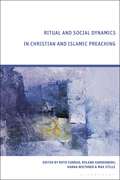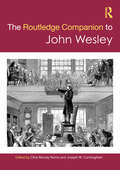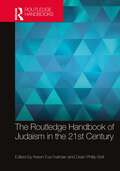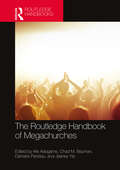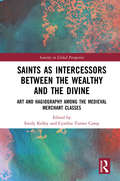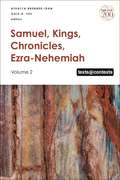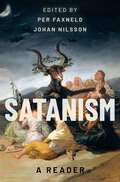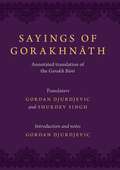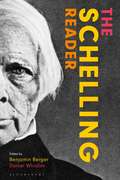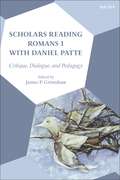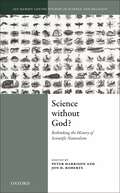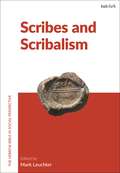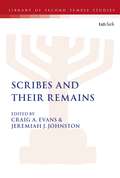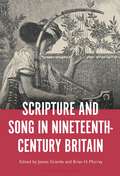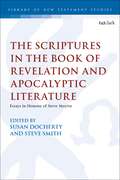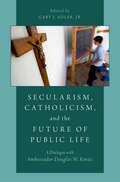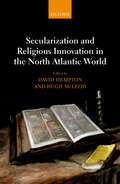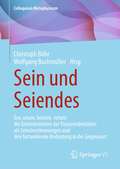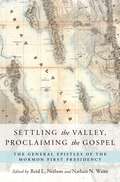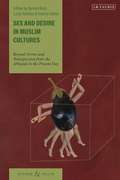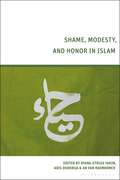- Table View
- List View
Ritual and Social Dynamics in Christian and Islamic Preaching
Christian and Islamic sermons from past and present, and their preachers, are analyzed to reveal the socio-cultural dynamics of religious speeches.Part I focuses on the explicit contribution of sermons in socio-cultural transformation processes. It shows how sermons connect with holy texts, religious norms of the specific group, and social-cultural contexts.Part II analyzes the dynamic tension between normativity and popularity. Rather than juxtaposing normative stances and the popularity of sermons, it shows how that normativity can itself contribute to popularity and the quest of popularity carries its own normative stances.Part III explores the ritual embeddedness of religious speech in the sermon in relation to social dynamics, normativity, and popularity, and shows how speech and rituals have a reciprocal relationship.
The route of the Exodus (Large Print)
This image shows a map of the ancient Middle East. There is a locator dot shown, which will be at the top left when the image is the correct way up. The map is surrounded by an image border. There is a small key and a scale in the bottom left corner. The Mediterranean Sea is in the top left of the page. The Red Sea is in bottom centre of the page. The Dead Sea is in the top right of the page. The land is not textured. As it is today, Egypt fills the left of the page. Modern day Israel is in the top right of the page. The route taken is shown as a dashed line and the direction indicated by arrows. Towns on the route are marked by triangles.
The Routledge Companion to John Wesley (Routledge Religion Companions)
The Routledge Companion to John Wesley provides an overview of the work and ideas of one of the principal founders of Methodism, John Wesley (1703-91). Wesley remains highly influential, especially within the worldwide Methodist movement of some eighty million people. As a preacher and religious reformer his efforts led to the rise of a global Protestant movement, but the wide-ranging topics addressed in his writings also suggest a mind steeped in the intellectual developments of the North Atlantic, early modern world. His numerous publications cover not only theology but ethics, history, aesthetics, politics, human rights, health and wellbeing, cosmology and ecology. This volume places Wesley within his eighteenth-century context, analyzes his contribution to thought across his multiple interests, and assesses his continuing relevance today. It contains essays by an international team of scholars, drawn from within the Methodist tradition and beyond. This is a valuable reference particularly for scholars of Methodist Studies, theology, church history and religious history.
The Routledge Handbook of Judaism in the 21st Century (Routledge Handbooks in Religion)
The Routledge Handbook of Judaism in the 21st Century is a cutting-edge volume that addresses central questions and issues animating Judaism, Jewish identity, and Jewish society in a global, integrated, and forward-looking way. It introduces readers to the complexity of Judaism as it has developed and continues to develop throughout the 21st century through the prism of three contemporary sets of issues: identities and geographies; structures and power; and knowledge and performances. Within these sections, international contributors examine central issues, topics, and debates, including: individual and collective identity; globalization and localization; Jewish demography; diversity, denominations, and pluralism; interreligious relations; political orientations; community organization; family and gender; the Bible and Talmud today; Jewish philosophy and authority in Jewish thought; digital Judaism; antisemitism; Jewish spirituality and rituals; memory; language; religious education; material culture, literature, music, and art; approaches to the environment; and contemporary Zionism and Israel. The handbook also includes an extensive bibliography to help orient readers to the most important and leading work in the field. The Routledge Handbook of Judaism in the 21st Century is essential reading for students and researchers in religious studies and Jewish studies. It will also be useful for those in related fields, such as cultural studies, literature, sociology, anthropology, and history, as well as Jewish professionals and lay leaders.
The Routledge Handbook of Megachurches (Routledge Handbooks in Religion)
The Routledge Handbook of Megachurches provides a survey of global megachurch phenomena, with an international slate of authors introducing existing and emerging research on a wide variety of relevant topics.Over the past decade, the field of megachurch studies has matured and become global in its scope and orientation. The Handbook offers 33 chapters by top scholars in the field, focusing in particular on: The location, demographic nature, and transnational connections of megachurches. Megachurch worship, hermeneutics, and theology (in theory and practice). Megachurch institutional dynamics. The various ways that megachurches have both influenced and been influenced by their social contexts in terms of class, age, gender, sexuality, and pop culture. The Handbook's interdisciplinary orientation makes it essential reading for sociologists, political scientists, anthropologists, media specialists, pop culture observers, business strategists, leadership consultants, marketing analysts, scholars of religion, and Christian historians, theologians, and missiologists. Experienced scholars of megachurches will gain valuable insight into aspects of megachurch research beyond their own specializations. Scholars new to the field will find the chapters useful as signposts for where to begin their own academic exploration. Christian pastors and laypeople will learn more about this increasingly prominent and influential form of their faith.
Routledge Handbook on Zionism
This Handbook, the first of its kind, provides an in- depth examination of the evolution, ideology, history and culture of Zionism and its various movements.Distancing itself from the slogans and cliches of advocacy, the volume provides much-needed context and background on the emergence of Zionism. The Handbook is divided into eight parts – with contributions from some forty of the world’s leading scholars on Zionism –to elucidate its various strands. These include underrepresented areas such as Zionism in the Arab World before the establishment of the State of Israel, Zionism and Marxism, the emergence of the Zionist Right, the language war between Hebrew and Yiddish, the struggle for Jewish women’s suffrage, the poetry of Lea Goldberg, and Zionism in emerging new Jewish communities in locations like Papua New Guinea, Guatemala and Zimbabwe. Another section on Zionism in repressive states stretches from an examination of Zionism in Hitler’s Germany to the Ayatollahs’ Iran today; from subterranean Zionism in Stalin’s Russia to apartheid South Africa. The volume concludes by examining current issues, including the relationship between evangelicals and Zionism in the US, and the representation of Zionism in the age of the internet.Providing a sweeping overview of Zionism in its many forms, the volume will appeal to students, researchers and general readers interested in Jewish studies in the Middle East and beyond, as well as those seeking to understand the roots of contemporary Israel.
Saints as Intercessors between the Wealthy and the Divine: Art and Hagiography among the Medieval Merchant Classes (Sanctity in Global Perspective)
Offering snapshots of mercantile devotion to saints in different regions, this volume is the first to ask explicitly how merchants invoked saints, and why. Despite medieval and modern stereotypes of merchants as godless and avaricious, medieval traders were highly devout – and rightly so. Overseas trade was dangerous, and merchants’ commercial activities were seen as jeopardizing their souls. Merchants turned to saints for protection and succor, identifying those most likely to preserve their goods, families, reputations, and souls. The essays in this collection, written from diverse angles, range across later medieval western Europe, from Spain to Italy to England and the Hanseatic League. They offer a multi-disciplinary examination of the ways that medieval merchants, from petty traders to influential overseas wholesalers, deployed the cults of saints. Three primary themes are addressed: danger, community, and the unity of spiritual and cultural capital. Each of these themes allows the international panel of contributors to demonstrate the significant role of saints in mercantile life. This book is unique in its exploration of saints and commerce, shedding light on the everyday role religion played in medieval life. As such, it will be of keen interest to scholars of religious history, medieval history, art history, and literature.
Samuel, Kings, Chronicles, Ezra-Nehemiah: Volume 2 (Texts @ Contexts)
This volume brings together disparate views about biblical texts in the books of Samuel, Chronicles and Ezra-Nehemiah and examines their influence in the life of contemporary communities, demonstrating how today's environments and disorders help readers to acquire new insights into such texts.The contributing scholars hail from different continents - from East Asia to the United States to Europe to South Africa and Israel - and count themselves as members of various Jewish and Christian traditions or secularist ways of life. But, in spite of their differences in location and community membership, and perhaps in the spirit of the times (2020 and its global discontents), they share preoccupations with questions of ethics in politics and life, 'proper' death, violence and social exclusion or inclusion. This volume offers readers a better understanding of how politics and faith can be melded, both in ancient and contemporary contexts, to serve the interests of certain classes and societies, often at the expense of others.
Satanism: A Reader
Satanism is a current of thought that generates intense feelings. It remains understudied by academics. This selection of key source texts from the period 1841 to 2017 attempts to remedy that gap. Ranging from the esoteric to the anti-clerical, countercultural, and political, the texts span a wide variety of genres, from poetry and polemical religious tracts to ritual instructions and internet FAQ's. All are provided with comprehensive introductions, written by specialists in the field, that offer readers both critical historical context and expert scholarly interpretation. Chronologically structured, the book can be read as a succinct historical overview of the development of Satanism, with the immediacy that only primary sources can provide. It is ideal for both classroom and research use, as well as a fascinating read for anyone with an interest in the occult, the transgressive, secularization, and the fringes of the religious landscape.
Sayings of Gorakhnath: Annotated Translation of the Gorakh Bani
Sayings of Gorakhnath presents a translation of late-medieval texts in Old Hindi, traditionally attributed to one of the founders of the Order of Nath Yogis. The Naths are associated with the creation and development of hatha yoga, with important historical and ideological links to Hindu tantra and alchemy. The texts gathered in this collection on the one hand provide a criticism of religious authority based on external knowledge lacking personal experience, while on the other hand they celebrate the path of yoga and its methods of engagement with the subtle body and its centres of occult energy and miraculous powers. The ultimate goal of the style of yoga described in the Sayings of Gorakhnath concerns the attainment of immortality and divinization of its adepts. This is achieved by redirecting the trajectory of the seminal fluid, which in the process transforms into the elixir, the amrt. In order to accomplish that goal, a regime of yogic practices is suggested, consisting of the assumption of a steady posture, breathing exercises, mantra chanting, and meditation. Djudjevic and Singh's translations are preceded by an introduction and accompanied by notes, which contextualize and elucidate the subject matter.
Sayings of Gorakhnath: Annotated Translation of the Gorakh Bani
Sayings of Gorakhnath presents a translation of late-medieval texts in Old Hindi, traditionally attributed to one of the founders of the Order of Nath Yogis. The Naths are associated with the creation and development of hatha yoga, with important historical and ideological links to Hindu tantra and alchemy. The texts gathered in this collection on the one hand provide a criticism of religious authority based on external knowledge lacking personal experience, while on the other hand they celebrate the path of yoga and its methods of engagement with the subtle body and its centres of occult energy and miraculous powers. The ultimate goal of the style of yoga described in the Sayings of Gorakhnath concerns the attainment of immortality and divinization of its adepts. This is achieved by redirecting the trajectory of the seminal fluid, which in the process transforms into the elixir, the amrt. In order to accomplish that goal, a regime of yogic practices is suggested, consisting of the assumption of a steady posture, breathing exercises, mantra chanting, and meditation. Djudjevic and Singh's translations are preceded by an introduction and accompanied by notes, which contextualize and elucidate the subject matter.
The Schelling Reader
F.W.J. Schelling (1775-1854) stands alongside J.G. Fichte and G.W.F. Hegel as one of the great philosophers of the German idealist tradition. The Schelling Reader introduces students to Schelling's philosophy by guiding them through the first ever English-language anthology of his key texts-an anthology which showcases the vast array of his interests and concerns (metaphysics, epistemology, philosophy of nature, ethics, aesthetics, philosophy of religion and mythology, and political philosophy). The reader includes the most important passages from all of Schelling's major works as well as lesser-known yet illuminating lectures and essays, revealing a philosopher rigorously and boldly grappling with some of the most difficult philosophical problems for over six decades, and constantly modifying and correcting his earlier thought in light of new insights.Schelling's evolving philosophies have often presented formidable challenges to the teaching of his thought. For the first time, The Schelling Reader arranges readings from his work thematically, so as to bring to the fore the basic continuity in his trajectory, as well as the varied ways he tackles perennial problems. Each of the twelve chapters includes sustained readings that span the whole of Schelling's career, along with explanatory notes and an editorial introduction that introduces the main themes, arguments, and questions at stake in the text. The Editors' Introduction to the volume as a whole also provides important details on the context of Schelling's life and work to help students effectively engage with the material.
Scholars Reading Romans 1 with Daniel Patte: Critique, Dialogue, and Pedagogy
A creative collection of essays that introduces, critiques, and dialogues with Daniel Patte's ground-breaking work Romans: Three Exegetical Interpretations and the History of Reception: Volume 1: Romans 1:1-32 (T&T Clark, 2018). Nine scholars from different cultural and methodological perspectives engage with Patte's work, critique his methodology and ethic of interpretation, and develop alternative readings. The first part introduces the format of Patte's book and the three historical interpretations: forensic, covenantal, and realized-apocalyptic. Part two debates methodology and ethical responsibility. The third part focuses on Romans 1:16-18 and 1:26-27 and includes a Confucian Chinese reading and a call for joint biblical and social-science research on the role of Romans in current public policy debates. The final part includes a chapter on pedagogy regarding how Patte's book can be used in the classroom. The final chapter is a powerful description by Patte himself of the various life experiences that shaped his reading of Romans. This book is a critical and communal conversation with Patte on the history of reception of Romans 1 and an example of the necessity of conversations among diverse interpreters that, as Patte says, “reflect the diversity of the modes of our human experience”.
Science Without God?: Rethinking the History of Scientific Naturalism (Ian Ramsey Centre Studies in Science and Religion)
Can scientific explanation ever make reference to God or the supernatural? The present consensus is no; indeed, a naturalistic stance is usually taken to be a distinguishing feature of modern science. Some would go further still, maintaining that the success of scientific explanation actually provides compelling evidence that there are no supernatural entities, and that true science, from the very beginning, was opposed to religious thinking. Science without God? Rethinking the History of Scientific Naturalism shows that the history of Western science presents us with a more nuanced picture. Beginning with the naturalists of ancient Greece, and proceeding through the middle ages, the scientific revolution, and into the nineteenth century, the contributors examine past ideas about 'nature' and 'the supernatural'. Ranging over different scientific disciplines and historical periods, they show how past thinkers often relied upon theological ideas and presuppositions in their systematic investigations of the world. In addition to providing material that contributes to a history of 'nature' and naturalism, this collection challenges a number of widely held misconceptions about the history of scientific naturalism.
Scribes and Scribalism (The Hebrew Bible in Social Perspective)
This volume is a concentrated examination of the varied roles of scribes and scribal practices in ancient Israel and Judah, shedding light on the social world of the Hebrew Bible. Divided into discussion of three key aspects, the book begins by assessing praxis and materiality, looking at the tools and materials used by scribes, where they came from and how they worked in specific contexts. The contributors then move to observe the power and status of scribal cultures, and how scribes functioned within their broader social world. Finally, the volume offers perspectives that examine ideological issues at play in both antiquity and the modern context(s) of biblical scholarship. Taken together, these essays demonstrate that no text is produced in a void, and no writer functions without a network of resources.
Scribes and Their Remains (The Library of Second Temple Studies)
Scribes and Their Remains begins with an introductory essay by Stanley Porter which addresses the principal theme of the book: the text as artifact. The rest of the volume is then split into two major sections. In the first, five studies appear on the theme of 'Scribes, Letters, and Literacy.' In the first of these Craig A. Evans offers a lengthy piece that argues that the archaeological, artifactual, and historical evidence suggests that New Testament autographs and first copies may well have remained in circulation for one century or more, having the effect of stabilizing the text. Other pieces in the section address literacy, orality and paleography of early Christian papyri. In the second section there are five pieces on 'Writing, Reading, and Abbreviating Christian Scripture.' These range across numerous topics, including an examination of the stauros (cross) as a nomen sacrum. The volume concludes with reflections by co-editor Peter Arzt-Grabner incorporating his longstanding expertise in the study of documentary papyri, especially as these ancient documents relate to New Testament research. From the perspective of a papyrologist, Arzt-Grabner discusses how New Testament scholars use documentary papyri today and recommends some future directions.
Scripture and Song in Nineteenth-Century Britain
This volume brings together new approaches to music history to reveal the interdependence of music and religion in nineteenth-century culture. As composers and performers drew inspiration from the Bible and new historical sciences called into question the historicity of Scripture, controversies raged over the performance, publication and censorship of old and new musical forms. From oratorio to opera, from parlour song to pantomime, and from hymn to broadside, nineteenth-century Britons continually encountered elements of the biblical past in song. Both elite and popular music came to play a significant role in the formation, regulation and contestation of religious and cultural identity and were used to address questions of class, nation and race, leading to the beginnings of ethnomusicology. This richly interdisciplinary volume brings together musicologists, historians, literary and art historians and theologians to reveal points of intersection between music, religion and cultural history.
The Scriptures in the Book of Revelation and Apocalyptic Literature: Essays in Honour of Steve Moyise (The Library of New Testament Studies)
This volume addresses one of the key issues in the study of the Book of Revelation and the apocalyptic genre more broadly – the re-use within these texts of the Jewish Scriptures. A range of expert contributors analyse specific themes and passages, and also explore wider methodological questions, aiming particularly to engage with the ground-breaking work in this field of Steve Moyise.Divided into three sections, the book first focuses on hermeneutical questions, such as the role of 'typology' in interpretation, and the relationship between the 'original meaning' of a scriptural text and the sense it acquires in a new literary context. In the following section, a series of chapters offers detailed exegetical engagement with the Book of Revelation. These probe the scriptural background of some of its major theological themes (e.g. time, sounds and silence) and significant passages (e.g. the Song of the Lamb and other hymns), and highlight fresh aspects of its reception by both ancient and modern audiences. The final section considers the place of scripture and its interpretation in a selection of other early Jewish and early Christian apocalyptic writings (including 1 Enoch, Paul's Letters and the First Apocryphal Apocalypse of John).
Secularism, Catholicism, and the Future of Public Life: A Dialogue with Ambassador Douglas W. Kmiec
How can religion contribute to democracy in a secular age? And what can the millennia-old Catholic tradition say to church-state controversies in the United States and around the world? Secularism, Catholicism, and the Future of Public Life, organized through the work of the Institute for Advanced Catholic Studies (www.ifacs.com), responds to these questions by presenting a dialogue between Douglas W. Kmiec, a leading scholar of American constitutional law and Catholic legal thought, and an international cast of experts from a range of fields, including legal theory, international relations, journalism, religion, and social science.
Secularization and Religious Innovation in the North Atlantic World
In the early twenty-first century it had become a cliché that there was a 'God Gap' between a more religious United States and a more secular Europe. The apparent religious differences between the United States and western Europe continue to be a focus of intense and sometimes bitter debate between three of the main schools in the sociology of religion. According to the influential 'Secularization Thesis', secularization has been an integral part of the processes of modernisation in the Western world since around 1800. For proponents of this thesis, the United States appears as an anomaly and they accordingly give considerable attention to explaining why it is different. For other sociologists, however, the apparently high level of religiosity in the USA provides a major argument in their attempts to refute the Thesis. Secularization and Religious Innovation in the Atlantic World provides a systematic comparison between the religious histories of the United States and western European countries from the eighteenth to the late twentieth century, noting parallels as well as divergences, examining their causes and especially highlighting change over time. This is achieved by a series of themes which seem especially relevant to this agenda, and in each case the theme is considered by two scholars. The volume examines whether American Christians have been more innovative, and if so how far this explains the apparent 'God Gap'. It goes beyond the simple American/European binary to ask what is 'American' or 'European' in the Christianity of the nineteenth and twentieth centuries, and in what ways national or regional differences outweigh these commonalities.
Secularization and the World Religions
The question of religion, its contemporary and future significance and its role in society and state is currently perceived as an urgent one by many and is widely discussed within the public sphere. But it has also long been one of the core topics of the historically oriented social sciences. The immense stock of knowledge furnished by the history of religion and religious studies, theology, sociology and history has to be introduced into the public conscience today. This can promote greater awareness of the contemporary global religious situation and its links with politics and economics and counter rash syntheses such as the “clash of civilizations”. This volume is concerned with the connections between religions and the social world and with the extent, limits, and future of secularization. The first part deals with major religious traditions and their explicit or implicit ideas about the individual, social and political order. The second part gives an overview of the religious situation in important geographical areas. Additional contributions analyze the legal organization of the relationship between state and religion in a global perspective and the role of the natural sciences in the process of secularization. The contributors are internationally renowned scholars like Winfried Brugger, José Casanova, Friedrich Wilhelm Graf, Hans Joas, Hans G. Kippenberg, Gudrun Krämer, David Martin, Eckart Otto and Rudolf Wagner.
Sein und Seiendes: Ens, unum, bonum, verum: die Erkenntnislehre der Transzendentalien als Seinsbestimmungen und ihre fortwirkende Bedeutung in der Gegenwart (Colloquium Metaphysicum)
Das Eine, das Gute, das Wahre und das Schöne – unum, bonum, verum, pulchrum – werden in der hochmittelalterlichen Philosophie als allgemeine Bestimmungen eines ungegenständlichen Seins, dessen erkennbare Spur sich in allem gegenständlich Seienden findet, verstanden. Weil diese Bestimmungen alle besonderen Seinsweisen übersteigen, werden sie ‚Transzendentalien‘ oder ‚Communissima‘ genannt: das, was allen Dingen gemeinsam ist. Der Sinn dieser Logik erschließt sich, wenn wir die Erkenntnis des jeweils Seienden, der Einzeldinge, in deren Anteilsbeziehung zum schlechthinnigen Sein – in dem sich das Eine, Gute, Wahre und Schöne verbinden – begreifen. Eben dazu will uns diese Denkform, die unter anderem auf Aristoteles zurückgeht und um die unter den Philosophen des Mittelalters gerungen wurde, anleiten; sie blieb bis in die Neuzeit maßgeblich als das Herz der europäischen Metaphysik. Heute ist uns dieses Denken fremd geworden. Man muss es sich aber vor Augen führen, um die mittelalterliche Philosophie, zu der die Neuzeit trotz aller Diskontinuitäten in weit engerer Verbindung steht, als uns allermeist bewusst ist, verstehen zu können. Zudem war die Logik der Transzendentalien nicht nur philosophiehistorisch wirksam, sondern eine Erkenntnislehre, die ihre fortwirkende Bedeutung bis heute behalten hat und deshalb eine Vergegenwärtigung verdient.
Settling the Valley, Proclaiming the Gospel: The General Epistles of the Mormon First Presidency
The Mormons had just arrived in Utah after their 1,300-mile exodus across the Great Plains and over the Rocky Mountains. Food was scarce, the climate shocking in its extremes, and local Indian bands uneasy. Despite the challenges, Brigham Young and his counselors in the First Presidency sent church members out to establish footholds throughout the Great Basin. But the church leaders felt they had a commission to do more than simply establish Zion in the wilderness; they had to invite the nations to come up to "the mountain of the Lord's house." In these critical early years, when survival in Utah was precarious, missionaries were sent to every inhabited continent. The 14 general epistles, sent out from the First Presidency from 1849 to 1856, provide invaluable perspectives on the events of Mormon history as they unfolded during this complex transitional time. Woven into each epistle are missionary calls and reports from the field, giving the Mormons a glimpse of the wider world far beyond their isolated home. At times, the epistles are a surprising mixture of soaring doctrinal expositions and mundane lists of items needed in Salt Lake City, such as shoe leather and nails. Settling the Valley, Proclaiming the Gospel collects the 14 general epistles, with introductions that provide historical, religious, and environmental contexts for the letters, including how they fit into the Christian epistolary tradition by which they were inspired.
Sex and Desire in Muslim Cultures: Beyond Norms and Transgression from the Abbasids to the Present Day (Gender and Islam)
What have different ideas about sex and gender meant for people throughout the history of the Middle East and North Africa? This book traces sex and desire in Muslim cultures through a collection of chapters that span the 9th to 21st centuries. Looking at spaces and periods where sexual norms and the categories underpinning them emerge out of multiple subjectivities, the book shows how people constantly negotiate the formulation of norms, their boundaries and their subversion. It demonstrates that the cultural and political meanings of sexualities in Muslim cultures - as elsewhere – emerge from very specific social and historical contexts.The first part of the book examines how people constructed, discussed and challenged sexual norms from the Abbasid to the Ottoman period. The second part looks at literary and cinematic Arab cultural production as a site for the construction and transgression of gender norms. The third part builds on feminist historiography and social anthropology to question simplistic dichotomies and binaries. Each of the contributions shows how understanding of sexualities and the subjectivities that evolve from them are rooted in the mutually-constitutive relationships between gender and political power. In identifying the plurality of discourses on desires, the book goes beyond the dichotomy of norm and transgression to glimpse what different sexual norms have meant at different times across the Middle East.
Shame, Modesty, and Honor in Islam
With a particular emphasis on definitions, continuities, and change, this edited volume examines the historical role and function of haya' – or feelings of shame, modesty, and honor – in Islamic theology and law, and explores contemporary Muslims' engagements with the concept. The book explores various conceptions of haya' and the practices associated with the concept in both Muslim majority and minority contexts. The empirically rich contributions reveal how haya' is socially constructed in varying social and cultural environments across the globe. From medieval Islam to the modern day, this book demonstrates the importance of haya' and its temporal and spatial transformations.
